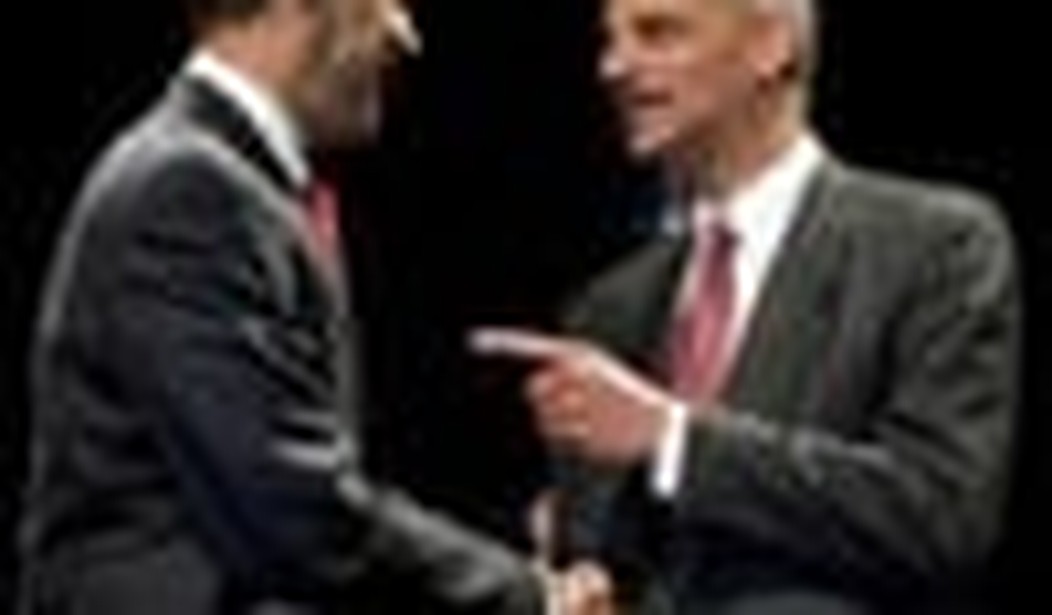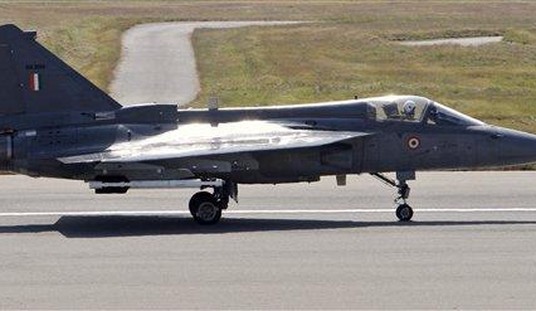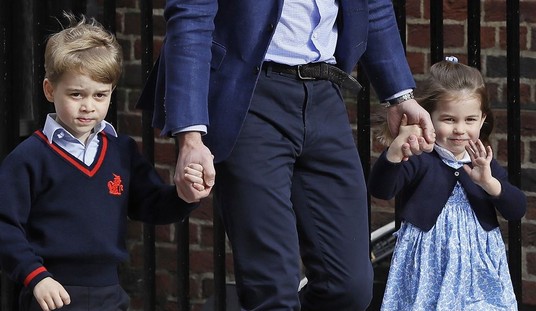My co-blogger Bob Owens’ recent PJMedia story, “The Definitive Scandal: ‘Gunwalker’ Much Worse Than ‘Iran-Contra,’” laid out the parameters of an incredibly flawed Bureau of Alcohol, Tobacco, Firearms, and Explosives (ATF) operation known as “Operation Fast and Furious,” or “Operation Gunwalker.”
As early as 2009 and until recently, ATF agents were ordered to allow weapons illegally purchased in the United States to “walk” across the southern border into the hands of drug traffickers. The attempts of honest, competent line agents to stop the flow of guns were met with orders to ignore their duty and threats by their supervisors who told them that the highest levels of the ATF and Department of Justice were behind the program. Gun dealers who complained were told to cooperate and to sell large numbers of guns to criminals. So loose were the controls that, to this day, the number of guns involved is not precisely known, but ranges from the hundreds to the thousands.
ATF managers and administrators have tried to justify the operation by a variety of means. The Obama DOJ has denied that any guns were ever allowed into the hands of criminals and has engaged in Clintonian language parsing. In their view, unless an ATF agent actually placed a gun in the hands of an illegal straw purchaser and allowed them to walk away unmolested, no guns “walked.” A “walking” gun, in ATF parlance, is an illegally obtained gun about which agents know, but which moves beyond their control, either accidentally or purposely. This DOJ corruption of reality was imposed on ATF supervisors, who embraced it, ordering agents to allow scores of illegally purchased weapons to walk.
Phoenix ATF “Group VII” supervisor David Voth, in an April 2, 2010, e-mail, noted that there were 187 murders in Mexico in March, including 11 policemen, and that the ATF allowed the purchase of 359 guns in March, including “numerous Barrett .50 caliber rifles.” According to lower-ranking agents, Voth was excited about what was happening in Mexico, apparently believing that the level of violence proved the value of the investigation which would lead to the arrests of high-ranking drug cartel criminals.
During a January 25, 2011, press conference, Phoenix ATF Special Agent in Charge William Newell announced the indictment of 20 people in the Fast and Furious case. Despite the fact that most of the indictments were for low-level straw purchases, Newell claimed that they represented the complete elimination of a firearms trafficking ring. He also claimed that ATF never allowed any guns to walk. For a multi-state federal investigation spanning several years, 20 arrests, particularly for bottom-of-the-ladder criminals, would normally be considered an embarrassment — and would have been far more likely to be downplayed rather than publicized.
In a February 4, 2011, letter to Senator Charles Grassley, Ron Weich, the DOJ’s assistant attorney general for legislative affairs, doubled down on the DOJ claim — proved to be false by multiple ATF agents — that the ATF never allowed weapons obtained by straw purchasers to walk into Mexico. Questioned later, DOJ argued that since it wasn’t actual straw purchasers who walked the weapons, but unknown third parties to whom they gave the guns, the guns didn’t really walk and their lie wasn’t actually a lie.
DOJ and ATF justification for Fast and Furious has always been that the operation was necessary to work up the chain to the heads of drug cartels and that, somehow, these high-ranking criminals would be implicated in the trafficking of guns. This is utter nonsense. Quite apart from the statements of brave, whistle-blowing ATF agents, there is every reason to believe it is nonsense that has cost American and Mexican lives. The key to understanding why lies in understanding police psychology and procedure.
In law enforcement, the only way to make more money or to gain more prestige is to leave the ranks of agents who actually enforce the law and to move into supervision and administration. The higher up the ladder of rank a former agent climbs, the more isolated he becomes from real police work and reality. At the higher ranks, politics becomes the primary concern of the administrator, as such people are commonly chosen not for their law enforcement experience and ability but for their demonstrated willingness to support and further the policies of those who appointed them. In federal law enforcement, the distance between those at the top and those who do the real work might as well be measured in astronomical units — one such unit being the distance from the Earth to the Sun.
With this in mind, consider the issue of incompetence. Law enforcement officers (LEOs) will go to any length to avoid appearing to be incompetent. This is not a small matter, for every LEO might, at any moment, have to rely on the competence of any other LEO, not merely to do the job properly, but to remain alive. LEOs know that every other LEO is constantly monitoring them for signs of incompetence. Appearing to be incompetent — for a LEO — means professional, and possibly even personal, death.
In the same way, law enforcement agencies (LEAs) tend to avoid the appearance of institutional incompetence like the plague because such incompetence tends to reasonably call into question the value of the continuing existence of their agency. This is by no means an easy task for administrators, who often consider LEOs to be barely sentient screw-ups who must be watched every moment lest they make noble administrators look bad.
Herein lies a substantial clue to understanding LEO and LEA behavior. If they — individually or as an agency — are willing to appear to be publicly incompetent, it is often because the alternative — usually the truth — is worse … much worse. It is also one of the more common indicators of a cover up. What is being covered up? Whatever they are using the smokescreen of their own incompetence to conceal.
Practical LEO procedure in cases like Gunwalker is quite simple. A straw purchase occurs when someone buys a gun for someone else who is not legally eligible to buy that gun. For example, Bob is a convicted felon who cannot legally buy or own guns. He talks his pal Steve, who can legally buy guns, into buying a gun for him. Not only is Steve in trouble for making the straw purchase, but Bob is in trouble for his part in the straw purchase and for violating the law that prevents convicted felons from owning firearms.
In many cases, ATF agents find out about straw purchases only after the fact and work backwards to recover the weapons and arrest the people involved. However, when an agent is aware of the straw purchase before it occurs — or as it occurs, as in the Gunwalker operation — he normally has an obligation to immediately seize the person making the straw purchase and, of course, the weapon or weapons involved. ATF agents are so trained, and their agency procedures are written in this way, all of which makes perfect sense. However, there are exceptions.
If an agent suspects that a larger conspiracy is going on — let’s say, that Mexican drug cartels are hiring people to make large scale straw purchases on an ongoing basis — it is reasonable not to immediately arrest every straw purchaser. Even so, great care must be used to keep track of every weapon and every person involved. Typically, enormous resources must be used to continuously track every weapon. Lower-level criminals will be grabbed and flipped to allow agents to work their way up the chain, implicating higher-ranking criminals and gathering more and more damning evidence until agents are reasonably certain that they have gone as high as possible. Only then will the initial investigation be concluded with substantial raids, arrests, and seizures of illegal guns, often simultaneously in multiple states.
Proper, common sense procedure was not followed in Gunwalker. In fact, multiple agents have testified that they were ordered not only not to make arrests, but to ignore the fact that hundreds, even thousands of weapons were making their way across the border into the hands of cartel killers. At best, they were allowed to conduct inadequate and incomplete surveillances, but a huge number of weapons were allowed to walk — which, for an ATF agent, is one of the most fundamental violations of procedure and common sense. It’s also potentially the most obvious indicator of incompetence imaginable. To date, four ATF agents have come forward, and in so doing have surely destroyed their careers. Federal bureaucrats crossed tend not to be forgiving.
The idea that the heads of Mexican drug cartels might eventually be implicated in the straw purchases of American guns is sheer lunacy, and the available evidence indicates that line ATF agents had no such delusions, but their supervisors and high-ranking ATF and DOJ officials may have. The heads of cartels are well known, and are guilty of far greater crimes than any with which they might have been charged under Gunwalker. Such people are responsible for hundreds or even thousands of murders. (Mass graves are continually being discovered in Mexico.) The kinds of drug, money laundering, and conspiracy charges — to say nothing of intelligence indicating that such criminals are actively aiding Islamic terrorists in their designs on America — relegate any charge that could have possibly been leveled as a result of Gunwalker to the category of spitting on the sidewalk. And of course, Mexico has been, at best, reluctant to extradite cartel heads to America for the violation of any law. Because the ATF has no jurisdiction in Mexico, or any foreign country for that matter, the idea of arresting a cartel head on such laughable charges is doubly ridiculous.
There is also precedent for handling the foreign heads of such criminal organizations as threats to American national security. Colombian drug lord Pablo Escobar was tracked and eventually killed by a Colombian security force reportedly trained and assisted by Navy SEALS and possibly other U.S. assets. The deposing and arrest of Panamanian strongman Manuel Noriega for his activities in support of drug traffickers is another well-known example of U.S. intervention in the furtherance of U.S. interests. If a given cartel head is truly a security threat, there is no reason to try to work upward from a street-level crime to their well-guarded foreign mansion. Any such attempt is doomed to fail before it begins.
Unfortunately, the Obama administration tends to have substantial difficulty identifying actual security threats and in telling the difference between America’s enemies and allies. The Holder DOJ also tends to want to treat even the most egregious terrorist threats as common crimes suitable for prosecution in the criminal courts.
We are left with the knowledge that the ATF ignored common sense and its own procedures — and that at least two American LEOs and at least 150 Mexican LEOs have to date paid the price. The highest levels of the ATF and the Holder DOJ are apparently willing to blatantly lie, and to appear to be incompetent. But why?
Is it possible that managers at the highest levels of the ATF truly believed that they were working a competent, significant law enforcement operation that would result in spectacular, international results? There is evidence that acting ATF head Kenneth Melson was intimately involved, including his request for IP addresses of cameras hidden in an Arizona gun shop so that he could watch straw purchases being made, but this could be little more than neophyte voyeurism. Even considering the enormous practicality and experience gulf that commonly exists between law enforcers and federal managers, this seems unlikely. That level of idiocy is probably rare, even in the federal government.
More likely is that Melson and others were pursuing Obama administration policies in pursuit of gun controls they could not secure through legislative means. Obtaining policy goals in this way is a common Obama administration tactic, and there is reason to believe, including the often repeated lie that 90% of the guns used illegally in Mexico come from America — stated by Mr. Obama himself — that this may be the case. But if so, it would suggest a willingness to pursue unpopular and arguably unconstitutional policies regardless of the consequences. This too is a common Obama administration tactic. It would also suggest an appalling lack of concern for the lives of American and Mexican LEOs and citizens.
There remain only two alternatives: that the managers of the ATF truly are stunningly incompetent — or that they are willing to appear to be dangerously incompetent to protect others, others in higher positions, because the truth is worse, much worse.









Join the conversation as a VIP Member